For a long time, the Greek synth manufacture Dreadbox has been known for high-quality but affordable analog instruments. This year, the sound forge has spoiled us with several new devices. A new analog Eurorack modular system for the entry level, a new paraphonic analog Synthesizer with the name NYX and ABYSS, a polyphonic analog Synthesizer. I had the opportunity to check out the NYX more closely and to review. After one month of testing, it’s time now for my final impression and review of this new paraphonic analog Synthesizer.
Oscillators
On the left side of the device, you have the oscillator section of the Dreadbox NYX. It includes 2 voltage controlled oscillators which need to warm up between 5 and 20 minutes before you can use them with the perfect pitch. During my test period, the devices was ready for use on average after 15 minutes. The oscillator section is divided in Oscillator 1 and 2, and each area doesn’t include the same function but distinguish quite well.
Only the tune rotary control, the oscillator sync function and the vibrato section do not differ and belong to both oscillators. Oscillator 1 includes a octave switch (32,16,8), a dedicated pulse width amount and glide slider. Under this section, you have the access to the waveforms of the first tone generator. You have here the choice between a sawtooth or square wave and beside the switch, you have a slider that gives you full control over the output of Oscillator 1.
Unlike Oscillator 1, Oscillator 2 includes a sawtooth or triangle waveform with a level control. This mixture of different waveforms in both oscillators gives you a lot of sound timbres possibilities. Also different is the octave switch here, which goes in this range from 16, 8 to 4. Than you have something quite different compared to other synths in this price range. Both oscillators will be tuned in the NYX synth basically with one big knob but oscillator 2 also include a separate detune slider.
During my 1 month test, It was a bit more complicated to find the right tune with these parameters. A bit tricky in the beginning to find the right pitch but with a bit of familiarisation, it works well. A function that provides interesting results in the Oscillator section is the Glide function. Each Oscillator has its own glide in the NYX, which makes it possible to create very new sound even though it is based on more normal analog synthesis. Also the included global vibrato gives you some more sound design options in my opinion. In the final, it comes also and What can not be missing in the oscillator section, is a basic oscillator sync function that sync the VCO2 to VCO1.
More exciting it becomes when you look at the VCO Routings in the left area. Until now, the oscillator section was relatively normal and doesn’t differ quite a lot from normal synths in this range but if you look at the different routing possibilities, the differences come to the fore. In the Dreadbox NYX, you have the choice between 4 different VCO routings. In simple words, this allows you to route the oscillators of the NYX very versatile to your filter or directly to the VCA. Compared to other analog subtractive synths in the same price range, this device goes beyond this thinkings and offers far more oscillator and filter combinations than normally available.
By default, the NOR is activated which route both VCO’s to the first filter. Split, as the name suggest, splits both VCO’s to the two different filters. VCO 1 goes to the filter 1 and VCO 2 to filter 2. If you want to use exclusively filter 2, than you must choose the Half routing. This route both oscillators to the second filter. More a special one is the VCA that routes both oscillators directly to the VCA. At the first whole the routing functions are a little confusing but after a while, you get much better and you can use especially these different routings to exhaust all the possibilities of this device.
Another important point to mention are the oscillator patching points located on the right side of the device. Here, you have one main global VCO pitch (CV Input) that allows to control the pitch of both oscillators. If you want it to be more interesting but also more complicated, you can use the inputs OS1 and OS 2 where you can control the pitches of each oscillator separately. To create more complex and FM sounds, you can also route the VCO2 source directly to VCO1. With the depth knob, you can adjust the intensity of the frequency modulation. Not to forget, you have also an input for the modulation of the pulse width of VCO 1.
On the whole, the oscillator section has a quite simple design in the first view, but if you spend more time with this, you will see that the possibilities are much bigger than with other analog mono Synths in the same price range. The whole thing takes a bit longer in the training period but this extra time is worthwhile afterwards in the sound.
Before we move forward to the filter section, here one of my design patches for the Dreadbox NYX Synthesizer

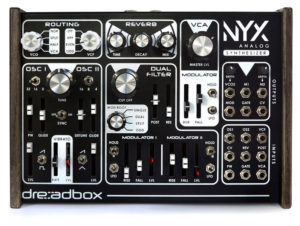
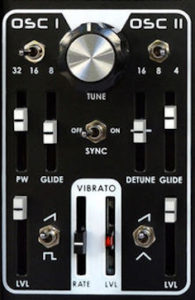
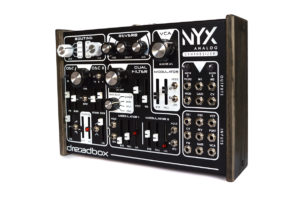
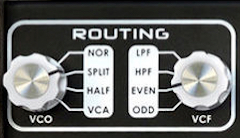
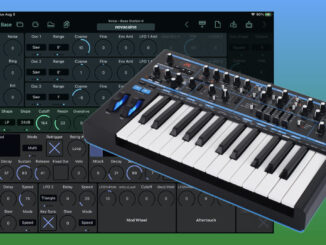
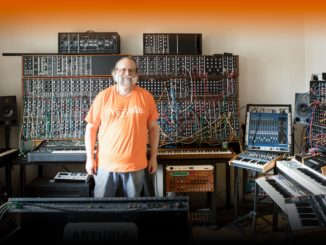
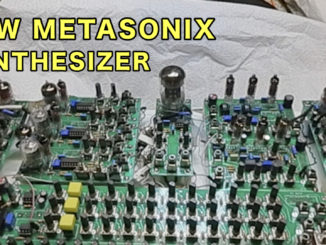
Be the first to comment